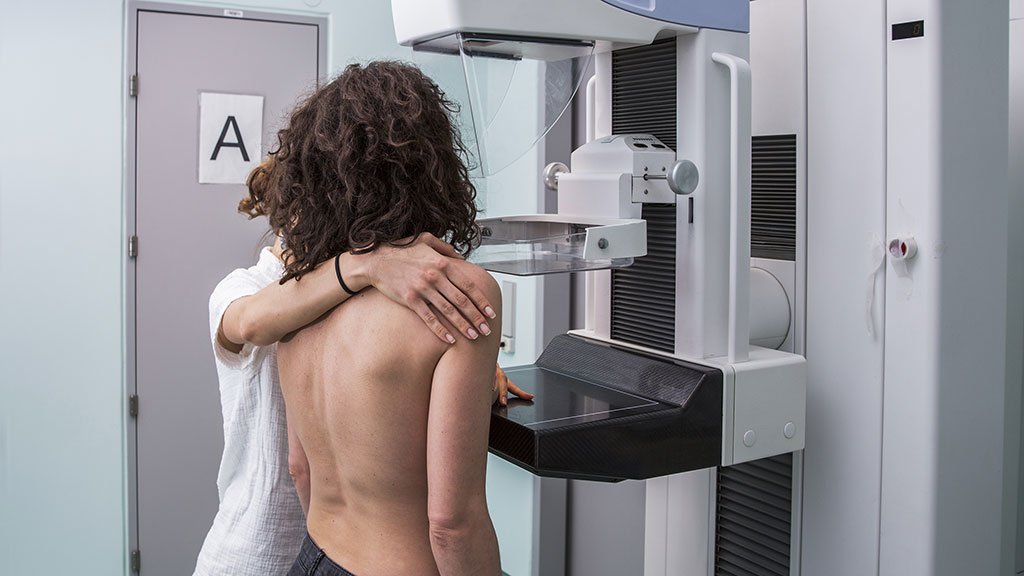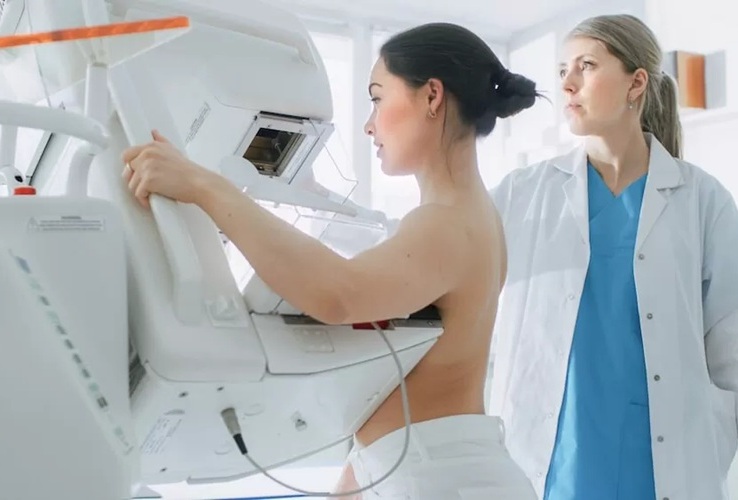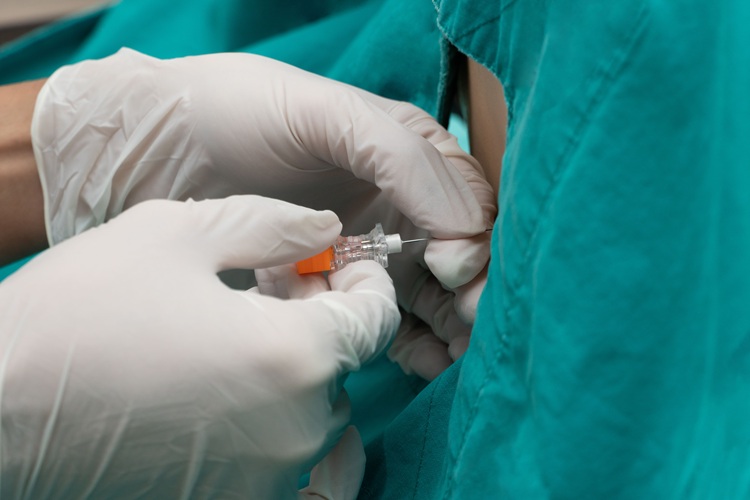Imaging Significantly Underestimates the Size of DCIS Tumors
|
By MedImaging International staff writers Posted on 15 Apr 2021 |

Image: Imaging can underestimate the actual size of a breast tumor (Photo courtesy of Getty Images)
A new study suggests that pre-operative imaging of high-volume ductal carcinoma in situ (DCIS) lesion size is inaccurate.
Researchers at the University of British Columbia (UBC; Vancouver, Canada), Western University (UWO; London, Canada), and Mount Saint Joseph Hospital (Vancouver, Canada) undertook a retrospective review of clinicopathologic data of patients treated for DCIS with breast conserving surgery (BCS) between 2012 and 2018. Mammographic and sonographic lesion sizes were compared with final pathology sizes.
The results showed that for 152 lesions visible on mammography, mean size on imaging was significantly smaller when compared to final pathology (2.3 centimeters versus 3.6 centimeters, respectively); the mean difference of 1.3 cm was a significant underestimation, with a correlation coefficient of 0.367. For the 48 lesions visible on ultrasound, the radiologic size was significantly smaller than pathologic size (1.7 centimeters versus 4.1 centimeters, respectively), but degree of underestimation was not significantly correlated. The study was published on March 23, 2021, in The American Journal of Surgery.
“Imaging size of DCIS tumors assessed by both mammography and ultrasound were significantly smaller when compared with their final size on pathology,” concluded lead author Rachel Liu, MD, of UWO, and colleagues. “Increase in the degree of underestimation by mammography was noted as the histological tumor size increased. This must be taken into consideration during surgical planning for maximizing the success of breast conserving surgery and minimizing return to the operating room.”
DCIS is the most common type of non-invasive breast cancer, in which the abnormal cells are contained inside the milk ducts. If DCIS is not treated, it may eventually develop into invasive breast cancer, which can spread outside the ducts into the breast tissue and then possibly to other parts of the body. Since DCIS cannot usually be felt as a breast lump or other breast change, most cases are diagnosed following routine screening with mammograms or ultrasound, appearing as micro-calcifications.
Related Links:
University of British Columbia
Western University
Mount Saint Joseph Hospital
Researchers at the University of British Columbia (UBC; Vancouver, Canada), Western University (UWO; London, Canada), and Mount Saint Joseph Hospital (Vancouver, Canada) undertook a retrospective review of clinicopathologic data of patients treated for DCIS with breast conserving surgery (BCS) between 2012 and 2018. Mammographic and sonographic lesion sizes were compared with final pathology sizes.
The results showed that for 152 lesions visible on mammography, mean size on imaging was significantly smaller when compared to final pathology (2.3 centimeters versus 3.6 centimeters, respectively); the mean difference of 1.3 cm was a significant underestimation, with a correlation coefficient of 0.367. For the 48 lesions visible on ultrasound, the radiologic size was significantly smaller than pathologic size (1.7 centimeters versus 4.1 centimeters, respectively), but degree of underestimation was not significantly correlated. The study was published on March 23, 2021, in The American Journal of Surgery.
“Imaging size of DCIS tumors assessed by both mammography and ultrasound were significantly smaller when compared with their final size on pathology,” concluded lead author Rachel Liu, MD, of UWO, and colleagues. “Increase in the degree of underestimation by mammography was noted as the histological tumor size increased. This must be taken into consideration during surgical planning for maximizing the success of breast conserving surgery and minimizing return to the operating room.”
DCIS is the most common type of non-invasive breast cancer, in which the abnormal cells are contained inside the milk ducts. If DCIS is not treated, it may eventually develop into invasive breast cancer, which can spread outside the ducts into the breast tissue and then possibly to other parts of the body. Since DCIS cannot usually be felt as a breast lump or other breast change, most cases are diagnosed following routine screening with mammograms or ultrasound, appearing as micro-calcifications.
Related Links:
University of British Columbia
Western University
Mount Saint Joseph Hospital
Latest General/Advanced Imaging News
- First-Of-Its-Kind Wearable Device Offers Revolutionary Alternative to CT Scans
- AI-Based CT Scan Analysis Predicts Early-Stage Kidney Damage Due to Cancer Treatments
- CT-Based Deep Learning-Driven Tool to Enhance Liver Cancer Diagnosis
- AI-Powered Imaging System Improves Lung Cancer Diagnosis
- AI Model Significantly Enhances Low-Dose CT Capabilities
- Ultra-Low Dose CT Aids Pneumonia Diagnosis in Immunocompromised Patients
- AI Reduces CT Lung Cancer Screening Workload by Almost 80%
- Cutting-Edge Technology Combines Light and Sound for Real-Time Stroke Monitoring
- AI System Detects Subtle Changes in Series of Medical Images Over Time
- New CT Scan Technique to Improve Prognosis and Treatments for Head and Neck Cancers
- World’s First Mobile Whole-Body CT Scanner to Provide Diagnostics at POC
- Comprehensive CT Scans Could Identify Atherosclerosis Among Lung Cancer Patients
- AI Improves Detection of Colorectal Cancer on Routine Abdominopelvic CT Scans
- Super-Resolution Technology Enhances Clinical Bone Imaging to Predict Osteoporotic Fracture Risk
- AI-Powered Abdomen Map Enables Early Cancer Detection
- Deep Learning Model Detects Lung Tumors on CT
Channels
Radiography
view channel
Machine Learning Algorithm Identifies Cardiovascular Risk from Routine Bone Density Scans
A new study published in the Journal of Bone and Mineral Research reveals that an automated machine learning program can predict the risk of cardiovascular events and falls or fractures by analyzing bone... Read more
AI Improves Early Detection of Interval Breast Cancers
Interval breast cancers, which occur between routine screenings, are easier to treat when detected earlier. Early detection can reduce the need for aggressive treatments and improve the chances of better outcomes.... Read more
World's Largest Class Single Crystal Diamond Radiation Detector Opens New Possibilities for Diagnostic Imaging
Diamonds possess ideal physical properties for radiation detection, such as exceptional thermal and chemical stability along with a quick response time. Made of carbon with an atomic number of six, diamonds... Read moreMRI
view channel
New MRI Technique Reveals Hidden Heart Issues
Traditional exercise stress tests conducted within an MRI machine require patients to lie flat, a position that artificially improves heart function by increasing stroke volume due to gravity-driven blood... Read more
Shorter MRI Exam Effectively Detects Cancer in Dense Breasts
Women with extremely dense breasts face a higher risk of missed breast cancer diagnoses, as dense glandular and fibrous tissue can obscure tumors on mammograms. While breast MRI is recommended for supplemental... Read moreUltrasound
view channel
New Incision-Free Technique Halts Growth of Debilitating Brain Lesions
Cerebral cavernous malformations (CCMs), also known as cavernomas, are abnormal clusters of blood vessels that can grow in the brain, spinal cord, or other parts of the body. While most cases remain asymptomatic,... Read more.jpeg)
AI-Powered Lung Ultrasound Outperforms Human Experts in Tuberculosis Diagnosis
Despite global declines in tuberculosis (TB) rates in previous years, the incidence of TB rose by 4.6% from 2020 to 2023. Early screening and rapid diagnosis are essential elements of the World Health... Read moreNuclear Medicine
view channel
New Imaging Approach Could Reduce Need for Biopsies to Monitor Prostate Cancer
Prostate cancer is the second leading cause of cancer-related death among men in the United States. However, the majority of older men diagnosed with prostate cancer have slow-growing, low-risk forms of... Read more
Novel Radiolabeled Antibody Improves Diagnosis and Treatment of Solid Tumors
Interleukin-13 receptor α-2 (IL13Rα2) is a cell surface receptor commonly found in solid tumors such as glioblastoma, melanoma, and breast cancer. It is minimally expressed in normal tissues, making it... Read moreImaging IT
view channel
New Google Cloud Medical Imaging Suite Makes Imaging Healthcare Data More Accessible
Medical imaging is a critical tool used to diagnose patients, and there are billions of medical images scanned globally each year. Imaging data accounts for about 90% of all healthcare data1 and, until... Read more
Global AI in Medical Diagnostics Market to Be Driven by Demand for Image Recognition in Radiology
The global artificial intelligence (AI) in medical diagnostics market is expanding with early disease detection being one of its key applications and image recognition becoming a compelling consumer proposition... Read moreIndustry News
view channel
GE HealthCare and NVIDIA Collaboration to Reimagine Diagnostic Imaging
GE HealthCare (Chicago, IL, USA) has entered into a collaboration with NVIDIA (Santa Clara, CA, USA), expanding the existing relationship between the two companies to focus on pioneering innovation in... Read more
Patient-Specific 3D-Printed Phantoms Transform CT Imaging
New research has highlighted how anatomically precise, patient-specific 3D-printed phantoms are proving to be scalable, cost-effective, and efficient tools in the development of new CT scan algorithms... Read more
Siemens and Sectra Collaborate on Enhancing Radiology Workflows
Siemens Healthineers (Forchheim, Germany) and Sectra (Linköping, Sweden) have entered into a collaboration aimed at enhancing radiologists' diagnostic capabilities and, in turn, improving patient care... Read more




















